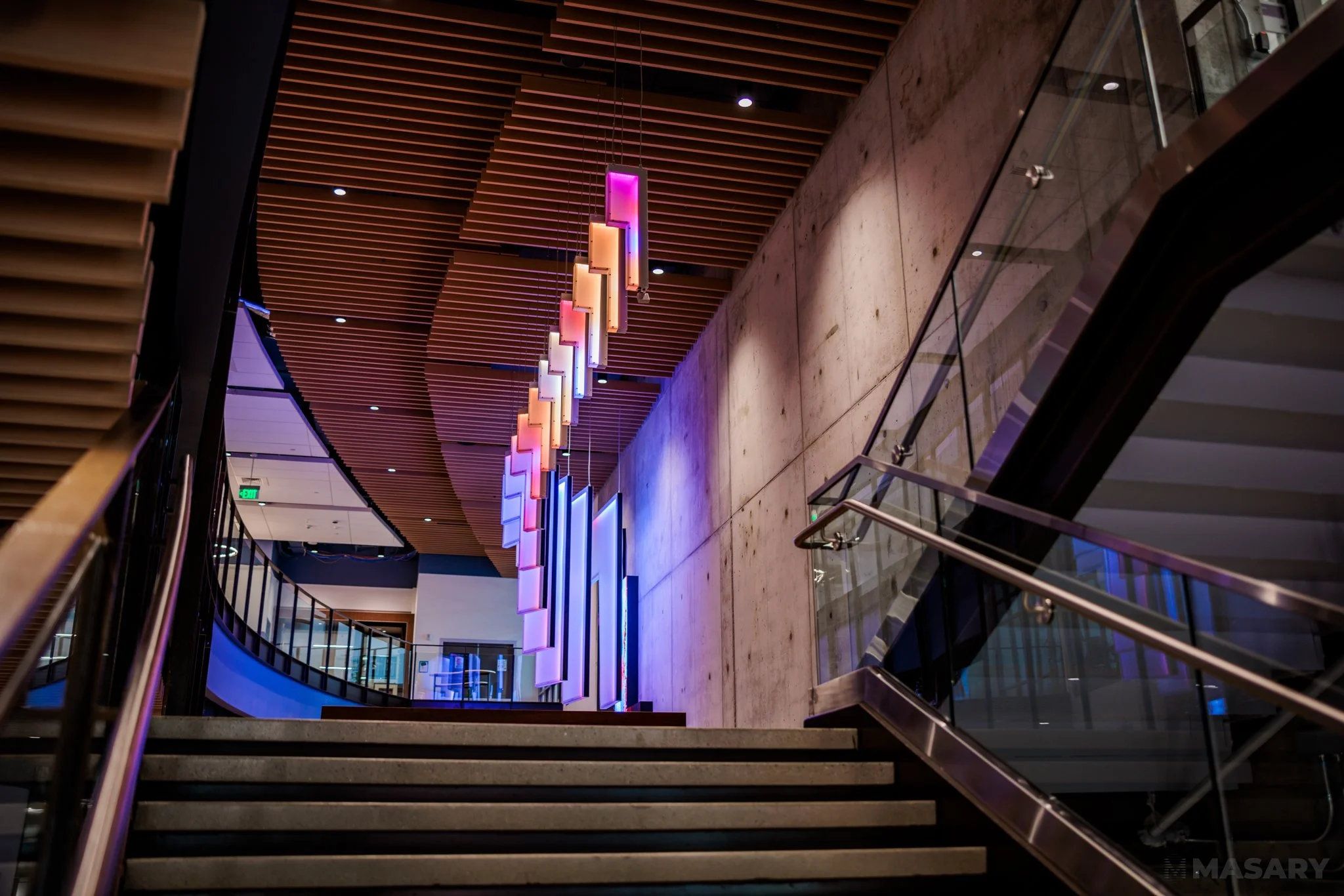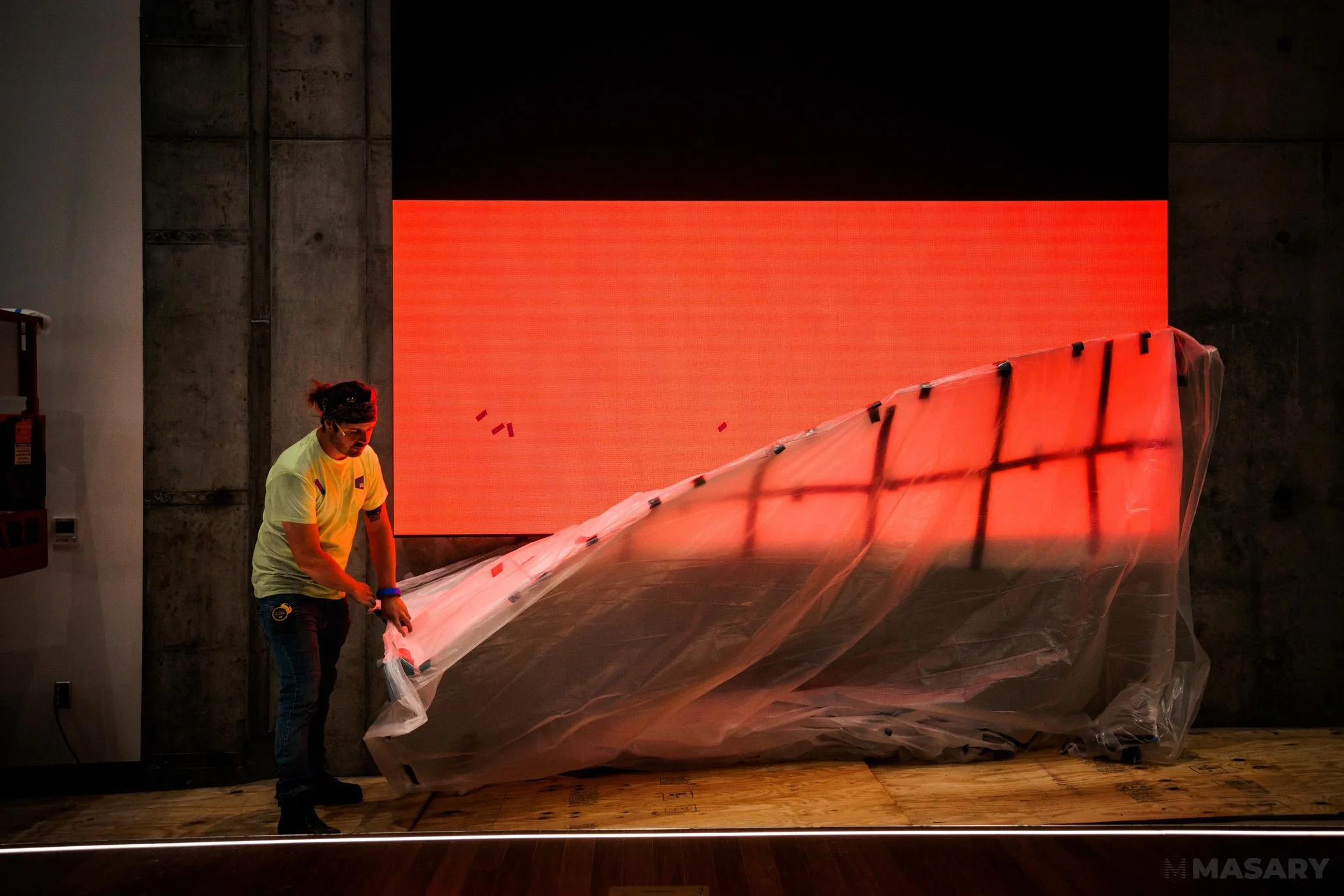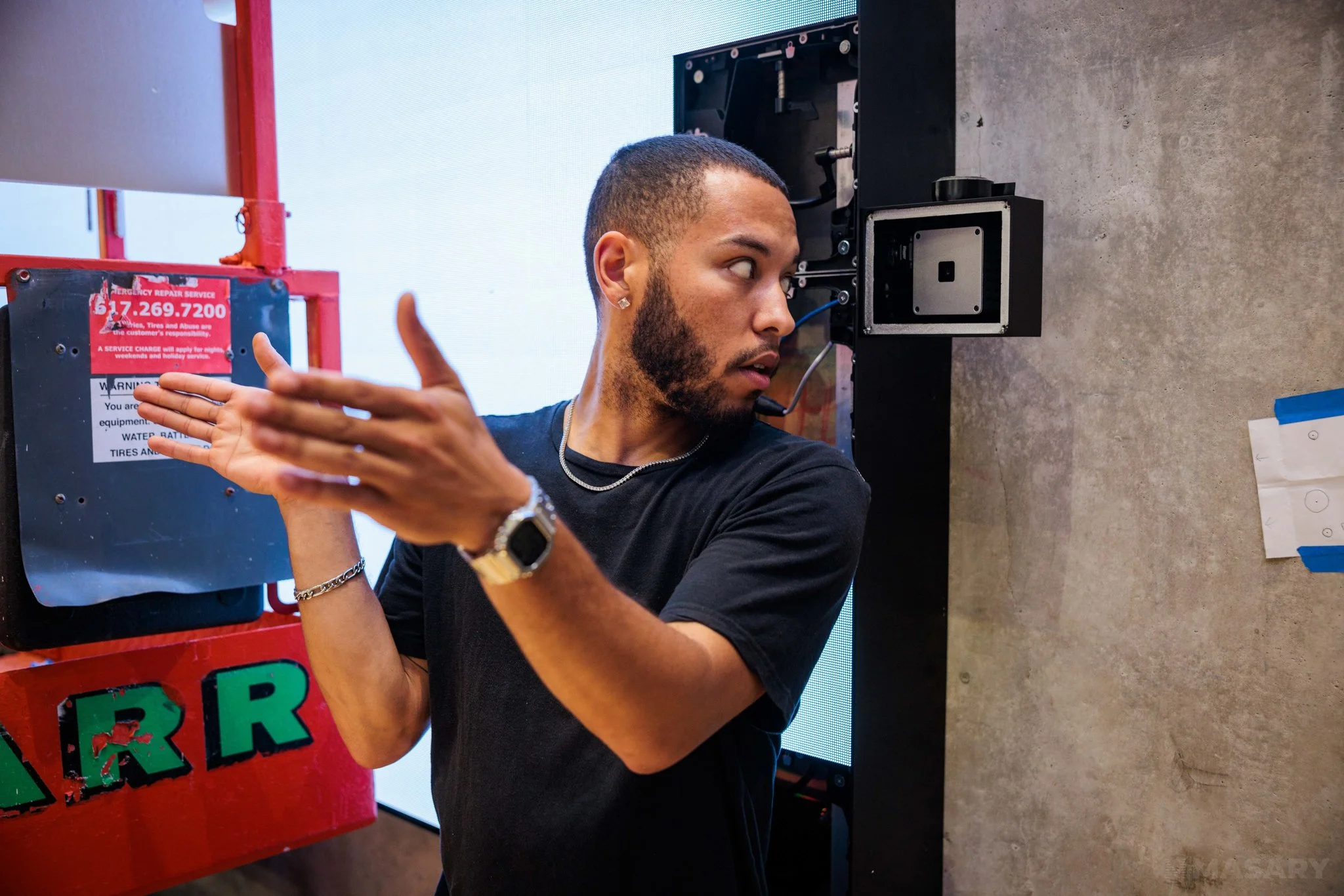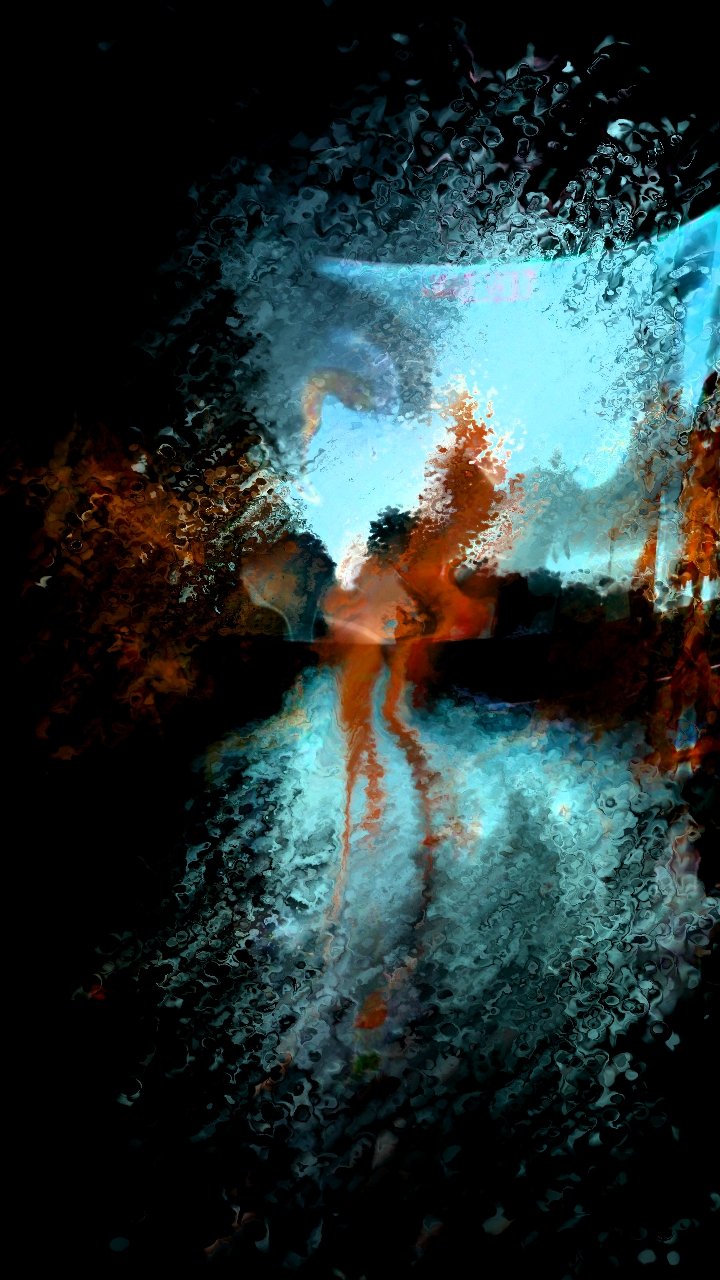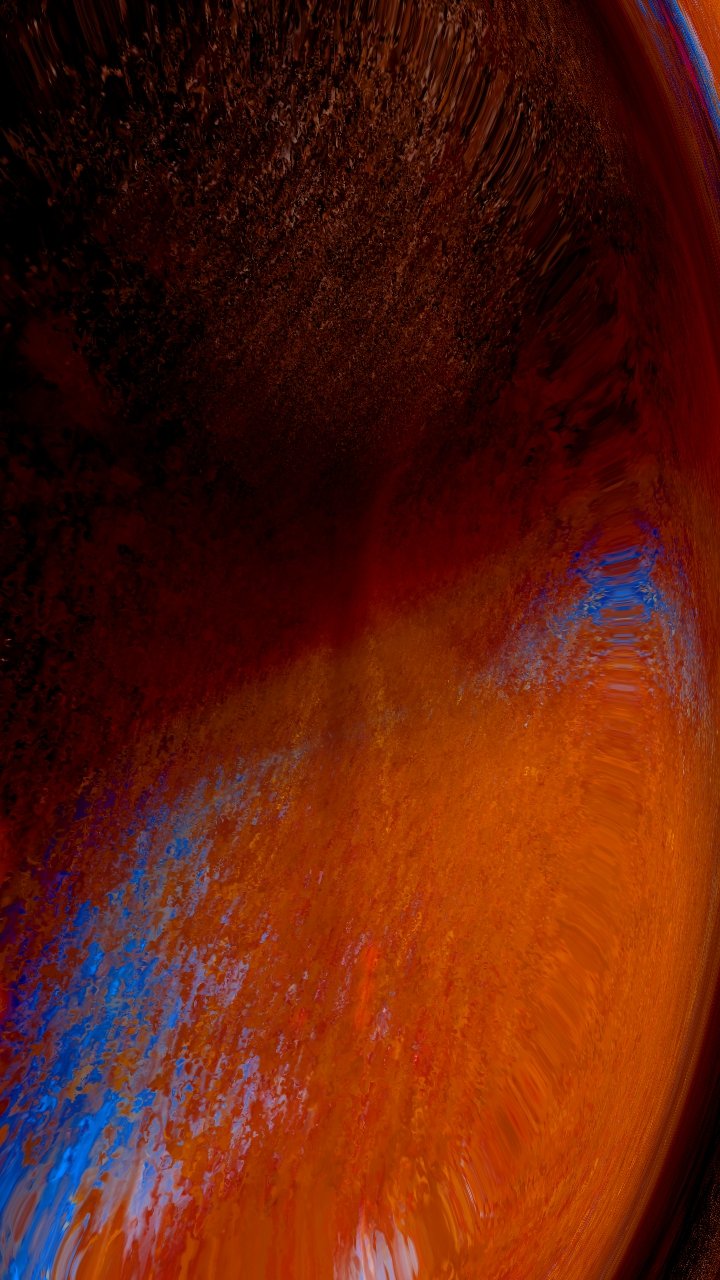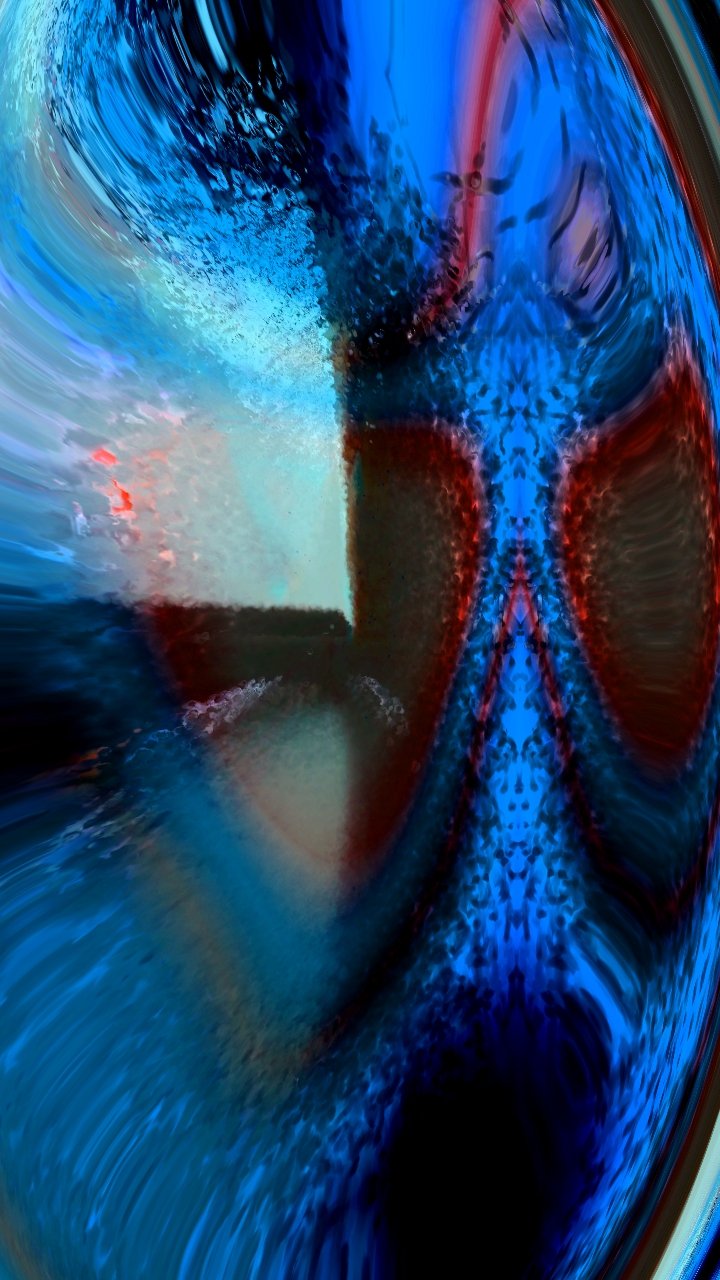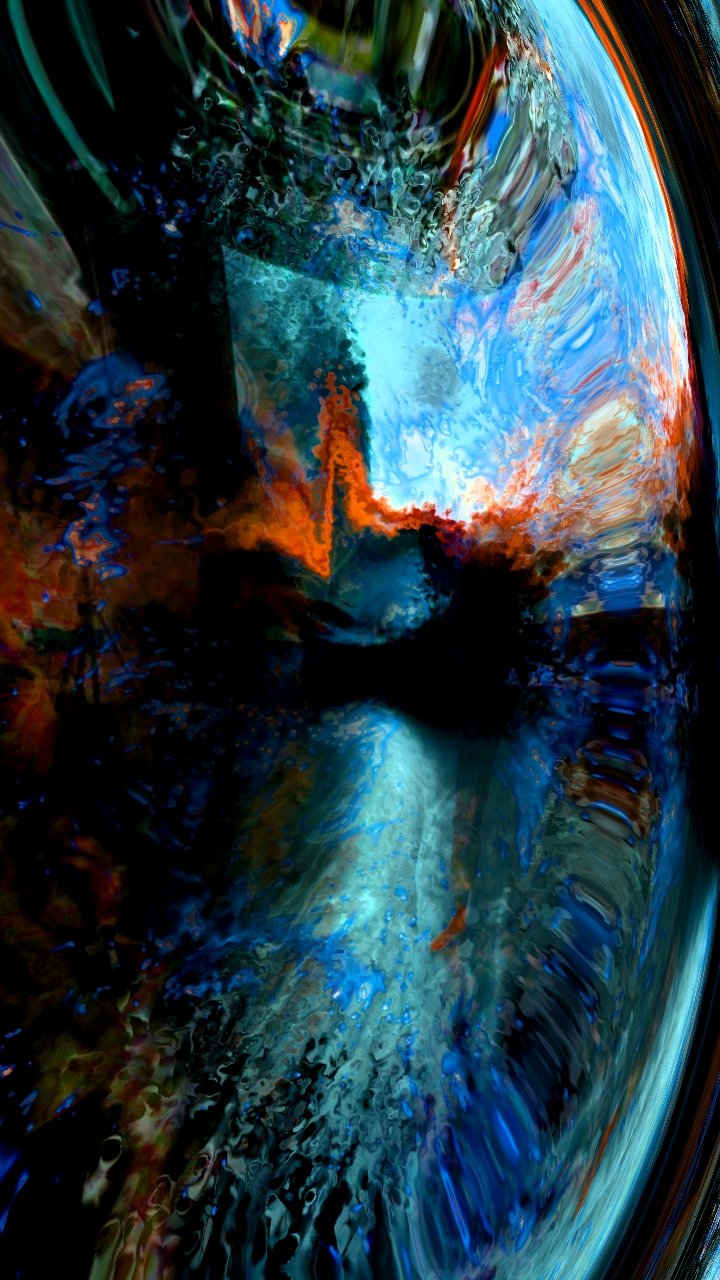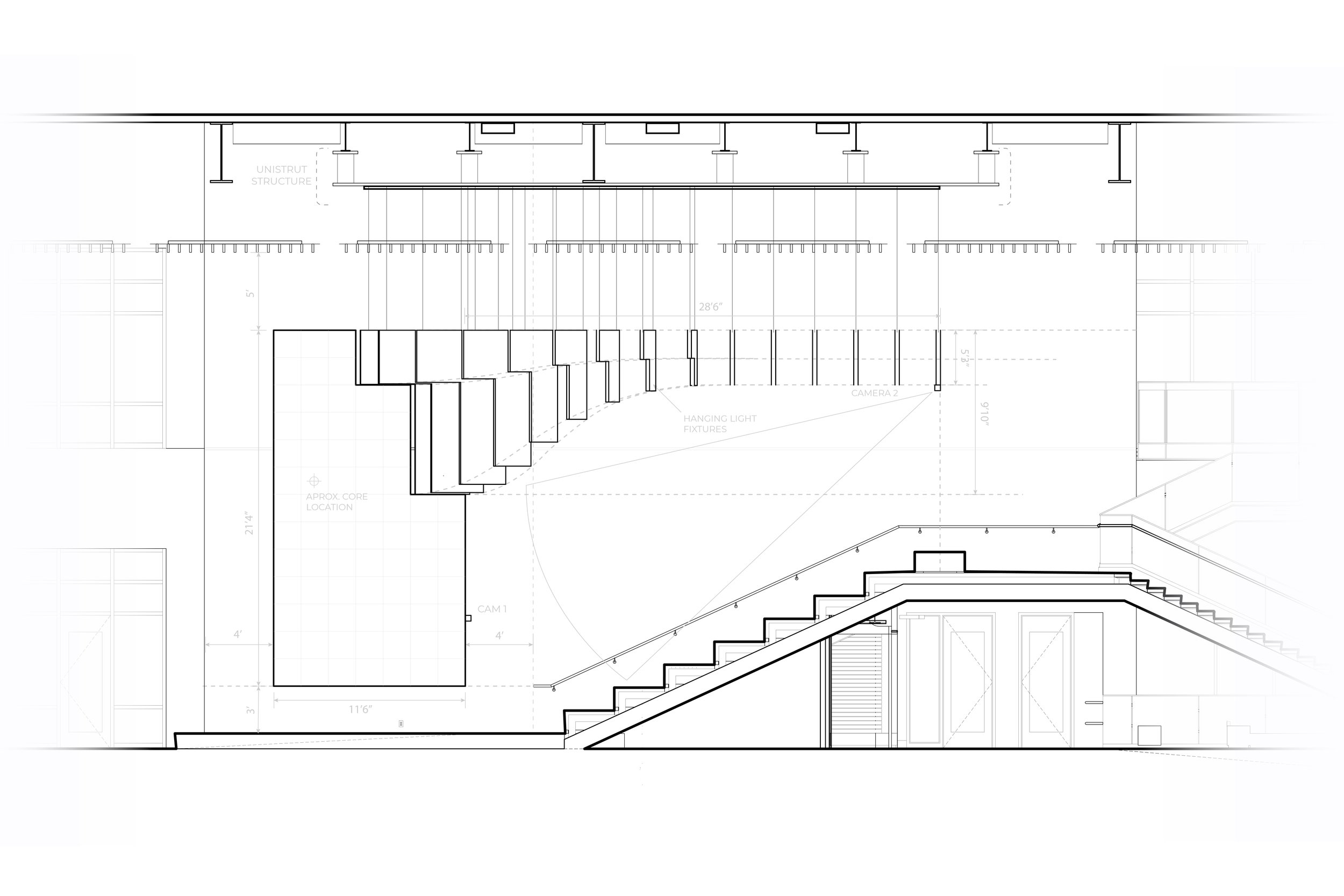MEMORY / DIFFUSION
Photo by Aram Boghosian
Memory / Diffusion
Created by MASARY
2022 - Boston, MA
Boston Arts Academy
Memory / Diffusion is an interactive artwork that explores concepts of memory as proposed and developed by the French philosopher Henri Bergson through his major works—Time and Free Will (1889), Matter and Memory (1896), and Creative Evolution (1907). Bergson’s metaphysics deals extensively with memory: he developed theories of different types of memory, the functionality and form of memory, our experience of memory, and the ways that memory formulates the basis for our experience and understanding of ourselves and the world around us. Knowing Memory / Diffusion would be a part of the everyday landscape for an arts school, the creative process set off to question how this artwork could both evolve over the course of years and mirror the vibrancy and diversity of activity in and around the school. Through research, philosophy, and inventive technologies MASARY has embarked on answering these questions and offering new speculation through this contemporary artwork.
While Bergson describes two forms of memory—habit-memory and representation-memory—it is representation-memory that Memory / Diffusion explores. Representation-memories are memories of discrete events or occurrences in our lives. Per Bergson, we are constantly creating representation-memories as we move through the world, soaking up our experiences in great detail. While some of these representation-memories can be consciously, intentionally recalled, many of these memories remain dormant until they are brought forth by some experience or happening in the world around us that inspires some connection to one memory or another. Such memories are separated from the flow of time in that, when brought to mind, a representation-memory can be re-lived and re-experienced in nonlinear ways, free from the rules of temporality from which the memory came. Further, when such memories are recalled they respond to the present in two ways: first, by translation, wherein the memory of the past comes rushing forward and collides with the present; and second, by rotation, wherein the memory “turns toward the situation of the moment,” highlighting those aspects or qualities that are most useful to the present (Gilles Deleuze, Bergsonism, 1988, 64).
Memory, according to Bergson, underpins all experience, with our every perception being colored and influenced by a constant stream of memories that are recalled to help us better understand ourselves and the world.
Memory / Diffusion explores these philosophies of memory through an interactive, multimedia artwork. The piece uses real-time camera input to perceive the environment directly in front of it, along with state-of-the-art machine learning techniques, custom software, and real-time graphics compositing and rendering. Through these mechanisms, we explore one possible technologically-driven approach to Bergson’s theories.
First, the camera input is analyzed using a deep feature extractor (a convolutional neural network) and compared with previously recorded events and occurrences via machine learning clustering and dimensionality reduction algorithms. Through these comparisons, the artwork selectively recalls stored memories on the basis of their similarity or difference to the moment at hand. When recalled, selected memories are modified by our real-time rendering system: memories are further analyzed and segmented into areas of interest, and each memory may be fragmented, temporally altered, passed through any number of video processing pipelines, and presented in part or in whole. Such memories are “remembered” by the artwork in response to the immediate environment, inviting the viewer to consider the history of the school, previous events that have happened in front of the artwork, and the viewer’s own relationship to the building, place, and people. Thus, the past collides again with the present through the screen and lighting fixtures of Memory / Diffusion.
Dedicated to the memory of George Fifield
Commissioned by City of Boston
DCL - Fabrication & Installation
Photos by Aram Boghosian








